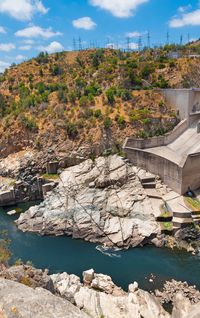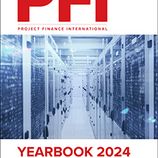After a relatively slow adoption of renewable electricity generation, Australia is quickly adding arrows to its quiver to decrease its heavy dependency on coal-fired electricity generation as quickly as possible. This article will focus on the state of the Australian storage subsector for project financiers. By Jean-Marie Verrier, head of renewables and sustainable energy, Australia, SFDA, and Jeremy Hasnip, head of energy transition, Australia, SFDA, at Sumitomo Mitsui Banking Corporation.
The first building blocks were onshore wind, large scale solar, and rooftop solar, all renewables subsectors whose achievements were noticed very quickly by the global renewables developer, independent power project (IPP), and original equipment manufacturer (OEM) community. But in recent months, all Australian stakeholders, from the Commonwealth government and its agencies, to Australian State governments, renewables developers and local regulators, have been focusing their attention on the two asset classes that have become crucial to the success of the renewables transition – transmission and storage. This article will focus on the state of the Australian storage subsector for project financiers.
The emergence of storage
Before we examine the risk allocation strategies and the structuring approaches taken by the market on storage projects, it is worth understanding where the Australian market is coming from because it is this evolution that is going to drive risk management approaches in the years to come. What we have observed in the last 10 years or so is a shift in the generation mix, with wind and solar becoming a crucial contributor to the Australian power sector. With this success, a series of realisations started to emerge in the consciousness of local and international decision-makers, in particular within the project finance community – both equity and debt:
1 – The Australian grid is weak, marginal loss factor risk is not benign in Australia, and synchronous technologies will be less and less prevalent. The grid will need to protect itself from the onslaught of intermittent generators that is required by decarbonisation targets.
2 – Construction risk allocation and grid connection risk allocation are two very different topics.
3 – With a first in class household adoption of rooftop solar, and the very slow pace with which aging baseload coal-fired power plants are being mothballed in Australia, negative pricing and economic curtailment are now a key risk for large-scale renewables projects in Australia, in particular large-scale solar, with a wave of co-located AC and DC-coupled solar and Battery Energy Storage System (BESS) projects currently emerging in all states across Australia.
![]()
Australia being the sophisticated electricity market that it has been for decades, the emergence of these risks has triggered a rapid response from the private sector, the regulators and the politicians, with a view to:
1 – Create a stronger grid, with fiscal intervention to support the construction of transmission lines if need be, and this is culminating right now with the various renewable energy zones and the new transmission lines being built across Australia.
2 – Connect more renewables more efficiently, with more regulatory support than in the past, with the Australian Energy Market Operator (AEMO) having to beef up its teams to accelerate the connection of new renewables generation to the grid.
3 – Adapt the country to the new supply and demand profile and the duck curve resulting from higher renewables penetration and the oversupply from coal plants, with electricity storage seen both as a risk mitigator due to its intermittent electricity firming nature, and as a profit-enhancing tool.
The risk mitigation angle triggered an immediate series of opportunities for storage developers, with the AEMO tendering a System Integrity Protection Scheme (SIPS) contract in Victoria, EnergyCo tendering the Waratah Super Battery in New South Wales, and more recently AEMO tendering the Collie BESS in Western Australia, to name just a few. All these flagship projects are lithium batteries ranging from one to four-hour duration.
The positive side effect of these public sector initiatives has been to educate project financiers on Australian lithium-based BESS projects, not just as fully contracted type of assets, but also as projects that can capture arbitrage opportunities, and sell frequency control ancillary services products to the grid. The initial Battery Energy Storage System (BESS) projects were financed by the Clean Energy Finance Corporation (CEFC) almost exclusively, but from 2022 to 2023, more traditional commercial banks with project finance expertise have entered the BESS-financing market.
![]()
In parallel with the regulatory-driven transactions, Australia has seen a growing list of BESS projects being opportunistically developed to capture daily spot price arbitrage opportunities, while rehabilitating old coal-fired power plant sites with top quality connection to the grid, or opportunities triggered by retailers needing to physically hedge their retail obligations with storage projects.
Interestingly, the Australian market does not limit itself to the lithium-based storage technology, which has its own limitations, namely a relatively short design life of 15–20 years and a relatively low storage cycle duration of one to four hours.
The four main longer-duration design life storage options we are currently seeing emerge in Australia are – pumped hydro electric storage (PHES); compressed air (CAES); green hydrogen; and gas-fired peaking plant with carbon capture and storage (Gas CCS).
* PHES is enjoying a resurgence of interest with government funding of the largest projects. The Commonwealth is financing the development of the A$12bn 2GW/168-hour Snowy 2.0 project. Queensland announced earlier this year it was moving ahead with the 2GW/24-hour Burdekin project and progressing implantation studies for the larger 5GW/24-hour Pioneer-Burdekin project. Remaining opportunities are generally much smaller in scale, typically around 300MW/8 hours storage. To reduce the significant capital costs, developers target locations with an existing water reservoir so that they must build only one new reservoir. From a financing perspective there is a large civil construction activity with risks of overruns and delays which need to be dealt with in the contracting solution or from sponsor support.
The economic sweet spot is around the six to eight hour full generation mark, as price spread declines with increased operating hours. Market price signals do not appear to support development of PHES without further revenue support and these projects will rely on government support such as the NSW long duration storage Long-Term Energy Service Agreement (LTESA) mechanism. Unlike Lithium-ion batteries, PHES does not have degraded performance with time.
* CAES is emerging as a credible alternative to PHES, particularly in dry regions. Unlike PHES, it has the advantage of not needing to be in hilly or mountainous regions, which are often national parks and remote from transmission. The technology uses an underground excavated cavern to store large volumes of air around 600m below surface level. Pressure is maintained on the stored air by a water column from a similar sized pond at the surface. To charge the store, air is compressed and injected into the cavern displacing water. When it is time to discharge, air is taken from the store and expanded trough a turbine. To improve efficiency, heat is captured during the compression stage and used to warm the air during the generation stage (Adiabatic CAES). The environmental footprint of these projects is much smaller than for PHES. They can provide eight to 16 hours of storage, and as they are rotating, equipment can provide valuable inertia to the grid.
* Green hydrogen could provide a longer-term energy storage solution. It can be stored at high pressure in pressure vessels, or in underground gas storage structures such as former salt caverns or depleted gas fields. Hydrogen can be used in fuel cells to create power or burnt in combustion turbines instead of using natural gas. We observe a trend for new combustion turbine orders to have a requirement for an initial minimum level co-firing on hydrogen with a pathway to a 100% hydrogen capability. Scalable storage for hydrogen gas provides a way towards large volume inter-seasonal storage to handle renewable droughts.
* Gas with carbon capture and storage (CCS) could also be an option for long-duration clean energy storage and compete with hydrogen powered peaking plants. The commercialisation of this in Australia faces some headwinds as the Commonwealth legislation restricts CEFC and the Australia Renewable Energy Agency (ARENA) from providing finance to CCS.
Project finance structures
If we were to define project finance as the art of lending against stable, predictable, sustainable and long term cashflows, the storage industry is clearly presenting its own set of challenges for project financiers.
We currently see seven headline risks for project financiers to try and mitigate in the Australian electricity storage sector:
* Refinancing risk – Unlike power plants, storage projects do not sell a product that has a transparent cost of production and is traded on a transparently priced pool. They either sell a service, ie, storage and/or ancillary services, that can be tolled, and the price achieved in these tolling arrangements is still very opaque. This renders refinancing risk very difficult to assess if the loan notional tenor goes beyond the tolling arrangement maturity, and no new tolling contract is found at expiry of the initial one. It is worth remembering that similarly to the wind and solar sectors, in Australia the storage sector attracts tolling contracts that are not always genuinely long term, ie, around eight to 12 years, which potentially creates sizeable merchant balloons in financial structures.
* Self-cannibalisation risk – BESSs are also a physical tool for electricity traders, usually relying on software driving batteries to store electricity when prices are very low or negative, and selling electricity when spot prices peak. In pure economics theory, the time when market equilibrium is achieved (by building enough of the right type of storage capacity in the system) should coincide with the time when trading opportunities disappear. This means that lenders that bank arbitrage revenues are not just taking the risk of the frequency of trade opportunities being in line with base case or not, and the risk of the spreads these trades can capture being in line with base case or not. They are also taking the risk of these arbitrage opportunities vanishing quicker than originally expected, as massive storage (and transmission) capacity is built into the system (this will take quite a bit of time, of course).
* Life expectancy risk – The design life of lithium-based BESSs is still a question mark. Lenders are not yet sure that design life is as bullet proof as advertised and warrantied. The way the battery is used on a daily basis can in fact also influence its life expectancy. There will be a time when the market will have a solid knowledge for these assets’ life expectancy, like we finally do for wind and solar generation. But the jury is still out for BESS life expectancy in 2023.
* OEM credit risk – Electricity storage is a new industry and BESS OEMs’ creditworthiness is still a discovery process for banks. OEMs in the thermal power or the wind sector are all very well-known multinationals. For a bank, lending to a BESS with a 20-year tolling arrangement means taking a 20-year corporate risk on the OEM providing the crucial warranty protection and not just on the tolling counterparty. OEM replacement analysis is not as straightforward as in other renewables sectors at this stage.
* Technology obsolescence risk – The level of R&D currently deployed in the storage sector is unprecedented. Nobody truly knows which storage method, invented or not in 2023, will emerge victorious in the coming decades. Project finance is actually not a field of finance that is customarily exposed to technology obsolescence risk.
* New firming capacity risk – In the years to come in Australia, BESS may have to compete with other firming technologies that do not have to be storage technologies necessarily, like gas-fired peakers.
* Fire hazard risks – Fire hazards risk mitigation is one of the most heavily researched technical topics in the BESS industry at the moment, and financiers are still learning about this risk, which can come from overcharging or discharging, high temperatures (a reality in Australia), or manufacturing defects, which are not necessarily all under the OEM’s control. The insurance market may also not yet be fully equipped to mitigate that risk.
Based on this list of known unknowns, the successful project finance structures that will emerge for storage projects in coming years in Australia are likely to be those that have the following attributes:
* Merchant balloon mitigation – Preserving a solid alignment of interests between debt and equity is crucial in the BESS sector. Equity (and/or the tollers) should want to maximise returns as soon as possible while supply-demand is imbalanced, and debt will want amortisation as soon as possible to avoid merchant tails and back-ended technology obsolescence risk. Mini-perm structures and contingent cash sweeps are also very likely to be favoured by commercial banks to mitigate that risk.
* The why question – Focusing on the raison d’etre of the storage asset is crucial to be in a position to accept a degree of cashflow volatility. This does not automatically mean that storage assets should be fully tolled. What matters first is to ensure that the asset is genuinely needed by the grid, customers, regulators, etc (in the storage sector, supply may not necessarily create its own demand).
* Working with the counterparty best capable of handling risks – Focusing on global best practice to avoid counterparty risk in an emerging sector is what project finance has always done.
* Portfolio risk mitigation – Mitigating risks within a physical portfolio of assets will be helpful for investment and credit committees still educating themselves about the BESS industry. In a portfolio of generation and storage assets, a BESS will most likely carry its own benefit for equity and senior lenders by protecting the generation assets against a level of negative pricing/economic curtailment risks.
* Bilaterally negotiated debt sizing principles – Financial models should be structured to calculate debt quantum that reflects the credit risks carried by: i) tolling revenues; ii) floor revenues provided by utilities or by other players (like the state of New South Wales in the case of LTESAs, or the Capacity Investment Scheme (CIS) announced in November 2023 by the Commonwealth government); iii) FCAS and other ancillary services revenues; iv) caps revenues; v) proxy revenues swap revenues and vi) arbitrage revenues.
What’s next
As was the case in the power generation sector, the coming years are likely to show success stories in most sectors of storage in Australia, ie, lithium BESS, pumped hydro, compressed air, and hydrogen. It may also become clear that some storage projects are required for the short or medium-term improved performance of the system, and others for the longer term. There seems to be genuinely solid demand for all types of storage technologies at the moment in Australia.
In the future, Australia will be exposed to international and domestic forces that will drive the types of storage that emerge more successful than others. Engineering, procurement and construction (EPC) costs have a huge influence in Australia and so does FX volatility on international supply chain cost management.
The penetration of Electric Vehicles (EV) and the need for EV battery technology improvement is fuelling R&D funding on a global basis (are vanadium-based BESS or sodium-based BESS next?). Australia will benefit from these discoveries like any other country that has made a genuinely serious effort to educate itself on batteries and other storage technologies. The global battle for critical minerals is also going to drive this new industry’s outcomes, with Australia well positioned to benefit from global and domestic demand for its own critical minerals, while depending on other countries for minerals that are absent from Australia.
Faced with these forces, the Australian public sector may decide to pick winners more than it has in the past. Under its Step Change Scenario, the AEMO Integrated System Plan (ISP) predicts that Australia will need 63GW of new storage capacity. This is clearly only the beginning of this exciting journey for the storage industry, and Australia seems to be more than willing to carry its weight.
![]()
To see the digital version of this report, please click here.
To purchase printed copies or a PDF of this report, please email leonie.welss@lseg.com














